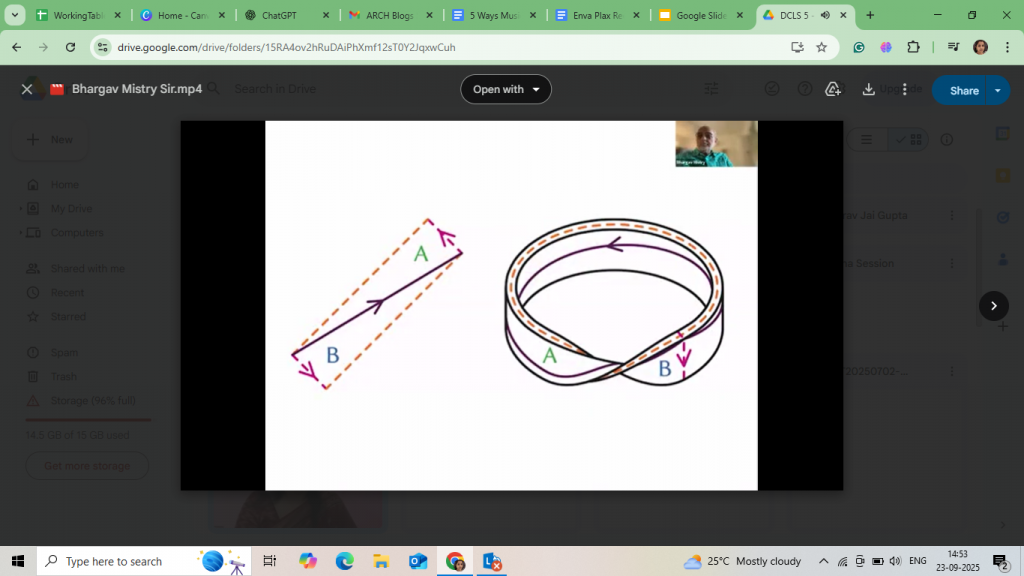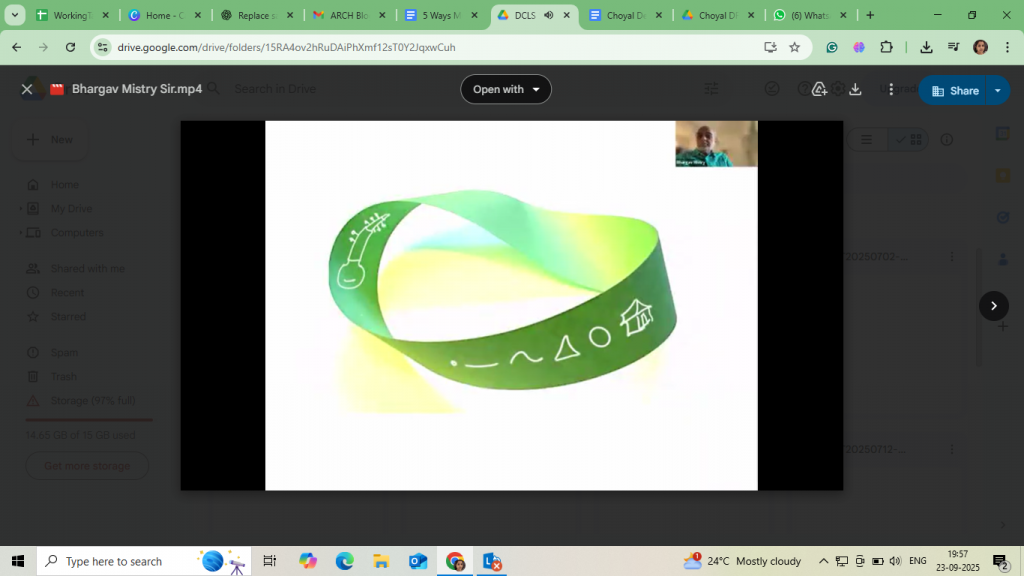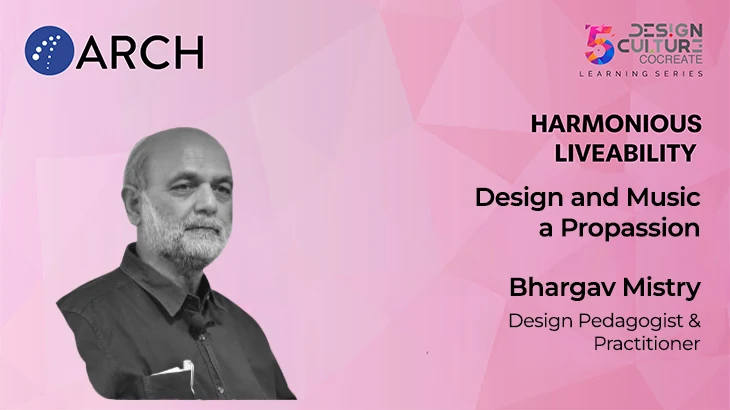Design today isn’t just about aesthetics; it’s about creating experiences. Whether its product design, communication design, interiors, textiles, UX, or architecture, the best designers work across senses, crafting experiences that are immersive and memorable. One of the most powerful yet often overlooked tools for sharpening this ability is music. By engaging deeply with music, designers train their multi-sensory creativity, the skill of perceiving and translating across sight, sound, touch, and emotion that applies it directly to their creative work.
This idea came alive during a recent Design Culture Learning Series session by Bhargav Mistry, a seasoned designer and musician. He explored the fascinating parallels between design and music, demonstrating how a designer can think like a composer. His talk showed students how bringing a musical mindset into design practice can foster harmony, innovation, and a deeper human connection.
In this blog, we distil those insights and explore how music can train multi-sensory creativity and help you become a better designer.
Ways Music Makes You a Better Designer
1. Seeing Design through Music
Good design has rhythm. Whether it’s the layout of a magazine spread, the façade of a building, or the user flow of an app, rhythm guides how people move through and experience a design. Music naturally teaches rhythm, patterns, beats, and transitions. Studying or playing music helps internalise timing, sequence, and variation — the same qualities that make a layout intuitive, a website smooth to navigate, or an interior space feel inviting.

Think of a song: The song moves between verses and choruses to hold your attention. Some notes are loud, others soft; a sudden pause can be as powerful as a crescendo. Similarly, a designer uses hierarchy in typography, spacing, and colour to guide the eye, creating moments of rest and moments of impact. Prof. Bhargav described “design as frozen music; music as flowing design.” By observing pacing, emphasis, and repetition in music, designers translate these concepts into spacing, grids, or motion design elements.
2. Mastering Negative Space Through Musical Pauses
In design, form defines space; in music, sound defines silence. Both rely on tension and release. Understanding this duality helps designers use negative space more effectively, just as musicians use pauses to heighten emotion.
Prof. Bhargav highlighted how a melody isn’t just a string of notes; it’s also the rests between them. Those rests create anticipation, allow the listener to breathe, and make the notes more powerful. The same principle applies to design. Empty spaces between elements give the eye a place to rest, emphasize hierarchy, and guide attention. By practising or deeply listening to music, designers learn to appreciate contrast and balance, making layouts, objects, or interfaces more elegant and emotionally resonant.

Treating space not as “leftover” but as an active element, like silence in music, makes your designs more focused, immersive, and effective.
3. Emotional Intelligence through Music
Design is fundamentally about people, and music is about evoking emotion. Immersing oneself in music trains the ability to sense mood, tone, and subtle shifts — the same sensitivity needed to design experiences that resonate with users.
A minor key can evoke melancholy, a sudden crescendo can create excitement, and a soft fade-out can leave listeners reflective. This awareness of emotional nuance directly informs design decisions, from selecting colours for a healthcare app to designing a calming retail space or crafting branding that feels aspirational rather than intimidating.
Listening deeply to music also trains the ability to read between the lines. Designers begin to notice texture, tension, and resolution, skills that help identify unspoken needs in user research or subtle cues in client feedback. Cultivating emotional literacy through music strengthens the heart of your design practice, creating experiences that feel authentic, human-centred, and memorable.
4. From Notes to Networks
Think of an orchestra: dozens of instruments, each with a role, coming together to form one coherent piece. System design works the same way. By studying music, especially ensemble work, designers learn how separate parts interconnect to form a single unit.

Prof. Bhargav compared a design system to a musical composition: individual modules or components are like notes and rhythms, while the overall experience is like the melody they create together. This illustrates that no element exists in isolation: a colour palette affects typography, interactions influence user flow, and materials impact usability.
Music also makes collaboration tangible. In an ensemble, participants must listen actively, anticipate others, and adjust their timing to maintain harmony. Similarly, in design studios, UX teams, or multidisciplinary projects, balancing your contribution with writers, developers, architects, or craftsmen ensures a seamless final outcome.
5. When Sounds Become Shapes
One of the most powerful effects of music on designers is how it blurs the boundaries between the senses. Listening to music can transform perception — sounds become shapes, colours evoke moods, and rhythms suggest textures. This cross-sensory thinking lies at the heart of innovative design.
Prof. Bhargav encouraged students to practice synesthesia exercises:
- Colour Mapping: While listening to music, note the colours that come to mind and build a palette from them.
- Rhythm Sketching: Draw lines, dots, or shapes following the beats of a track to inspire patterns, forms, or typography.
- Material Translation: Imagine which materials (wood, glass, metal, fabric) a song would embody if it were a space or object.

The speaker encouraged students to use these exercises as daily warm-ups to break out of visual thinking. Over time, this strengthens the ability to translate between sensory worlds, a crucial skill for designers working in branding, interiors, interaction design, or any field focused on holistic experiences. Training the mind this way allows design to move beyond the visible into the felt, heard, and experienced — the mark of truly innovative design.
At ARCH, we believe creativity flourishes when students engage with diverse forms of art and expression. Sessions like these are part of this approach, where students explore how music can train multi-sensory creativity and enhance design thinking. Beyond workshops, we also organize music performances, art exhibitions, and sensory-focused activities that allow students to connect, experiment, and discover new ways of perceiving the world around them. These experiences encourage our students to engage all their senses, fostering empathy, rhythm, and innovation in their design projects while deepening their understanding of the interplay between different creative disciplines.
Ready to explore the world of design like never before? Unleash your passion, train your senses, and transform the way you create. Your journey to becoming a multi-dimensional designer starts here!
